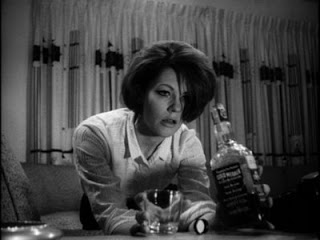First released in 1974, Deep Throat II (also known as Linda Lovelace, Secret Agent) is the R-rated sequel the legendary X-rated film, Deep Throat. I should, at this point, confess that I have never seen Deep Throat, though I have seen the 2005 documentary about the making of the film and its subsequent cultural impact, Inside Deep Throat. I’ve also read Legs McNeil’s oral history of the adult film industry, The Other Hollywood. Perhaps most importantly, I’ve watched Boogie Nights a dozen times.
Anyway, Deep Throat II….
The star of the original film, Linda Lovelace, returns as …. Linda Lovelace! Linda is working as a nurse for a perpetually turned-on sex therapist (Harry Reems) who, when told that he got laid just last night, whines, “Last night was a long time ago!” Among the therapist’s patients is nerdy Dilbert Lamb (Levi Richards), who is obsessed with black lingerie and his aunt, Juliet. Dilbert has built a giant super computer named Oscar. In its electronic voice, Oscar says stuff like, “Why do you want to talk to me, baby?”
The plot is not particularly easy to follow but, as far as I could tell, the head of the CIA (played by adult film vet Jamie Gillis) is concerned that Dilbert has been compromised by either the Russians or by a bunch of do-gooder activists led by a Ralph Nader-style journalist named Kenneth Whacker (David Davidson). (The journalist’s followers call themselves Whacker’s Attackers.) The decision is made to recruit Linda Lovelace to investigate because Lovelace apparently has a mysterious technique that she can use to get men to tell her anything.
When Linda is first approached by the CIA, she thinks that she is being drafted into the Army so that she can fight in Vietnam. “But I have asthma and I need new reading glasses!” she says. Hey, me too! Anyway, Linda is relieved to discover that she will not being going to Vietnam and that her new codename is Agent — wait for it — 0069. (Just in case you were wondering what the level of humor was in this particular film….)
Despite the film’s cast of veteran adult performers and the fact that it’s a sequel to the movie that some people went to jail for transporting across state lines, Deep Throat II is an incredibly tame movie. The film is edited so haphazardly that it feels as if at least half of it was left on the cutting room floor. At first, I assumed that I was watching a heavily edited version of the original film but a few minutes of research online revealed that I was watching the original. (Apparently, director Joe Sarno directed the film so that more explicit scenes could be directed by another filmmaker and inserted into the action but, for whatever reason, those scenes were never filmed. Sarno was usually one of the more aesthetically interesting and thematically daring of the directors working in the adult film industry. You would not necessarily know that from his work on this film.) The actors struggle to keep a straight face while delivering their lines, Harry Reems enthusiastically jumps up and down in almost every scene in which he appears, and Linda Lovelace seems to be trying really hard but she just has a blah screen presence. Unlike Marilyn Chambers in Rabid or Sasha Grey in The Girlfriend Experience, Linda Lovelace does not come across as having been a particularly good actress.
That said, there is one interesting aspect to Deep Throat II. Kenneth Hacker worries that Oscar could become smarter than the human being who programmed it and that the computer’s creation could be the first step to the creation of a permanent surveillance state, one in which even private thoughts will be used against the citizens of the United States. In the film, everyone laughs him off. 50 years later, it no longer sounds that fanciful.
14 Days of Paranoia:

